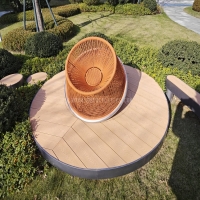Welcome to the website for landscape facilities products and knowledge.
What are the key differences between hand-forged and cast iron landscape tables?
When selecting outdoor furniture, understanding the distinctions between hand-forged and cast iron landscape tables is essential for making an informed choice. Hand-forged iron tables are crafted by skilled artisans who hammer and shape molten iron into unique designs, resulting in one-of-a-piece durability and intricate detailing. These tables often feature organic, flowing patterns and are highly resistant to wear due to the dense, hammered metal.
On the other hand, cast iron tables are created by pouring molten iron into pre-made molds, allowing for mass production of uniform designs. While cast iron is sturdy, it can be more brittle compared to hand-forged iron, making it prone to cracking under extreme stress. The surface of cast iron tables is typically smoother but lacks the artisanal texture of hand-forged pieces.
In terms of aesthetics, hand-forged tables offer a rustic, timeless appeal, while cast iron tables provide a more polished, traditional look. Maintenance-wise, both require protective coatings to prevent rust, but hand-forged iron often ages more gracefully, developing a desirable patina over time.
Ultimately, the choice depends on your priorities: hand-forged iron excels in craftsmanship and longevity, whereas cast iron is more affordable and consistent in design. Consider your outdoor space’s style and usage to determine the best fit.
Related search:

Recommendation
Swivel chair-Specialty steel structure woven rattan leisure chair with rotatable design